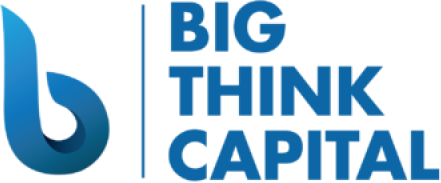Deciphering the Impact of 2025 Federal Interest Rate Hikes on Small Business Funding: Strategies to Maintain Financial Health
Estimated Reading Time: 5 minutes
- Understand the impact of federal interest rate hikes on various lending options.
- Implement best practices for anticipating and managing loan costs.
- Build strong relationships with banks for securing favorable terms.
Table of Contents
- The Impact of Federal Interest Rate Hikes on Various Lending Options
- Anticipating and Navigating Loan Costs Amid 2025 Interest Rate Increases: Best Practices
- Building Strong Bank Relationships to Secure Favorable Terms Despite Higher Interest Rates
- Three Practical Takeaways for Business Owners Exploring Financing
- FAQ Section
The Impact of Federal Interest Rate Hikes on Various Lending Options
Interest rate hikes typically stem from the Federal Reserve’s efforts to curb inflation. As rates rise, the borrowing costs associated with different financing options also increase. Here’s a look at how key lending products are impacted.
- Working Capital Advances: Working capital advances provide quick access to funds, but with rising interest rates, the costs of these short-term financing options can become significantly higher. Small businesses may find that the fees and interest associated with these advances could put a strain on cash flow.
- SBA Loans: The Small Business Administration (SBA) loans usually have competitive rates, but they are not immune to the effects of rising interest rates. With the SBA’s fixed-rate loans becoming more costly, business owners may need to carefully assess their repayment capabilities before proceeding with these loans. Understanding the full cost of borrowing is more critical than ever.
- Equipment Financing: For businesses needing to purchase or lease equipment, rising interest rates can considerably impact the cost of financing. Higher rates mean larger monthly payments, compelling business owners to reconsider the timing of their purchases or explore alternative financing methods that may be less affected by interest fluctuations.
- Merchant Cash Advances (MCA): With MCAs, small businesses receive a lump sum of cash in exchange for future sales. However, interest rates for MCAs can be shockingly high, and as general borrowing costs rise, businesses might face even steeper terms if they seek quick cash solutions.
- Lines of Credit: Lines of credit offer flexibility for managing cash flow, but with higher interest rates, keeping funds available might become more expensive. Small businesses should evaluate their usage of lines of credit and consider whether they can maintain them without straining their finances.
Anticipating and Navigating Loan Costs Amid 2025 Interest Rate Increases: Best Practices
The key to surviving and thriving in a high-interest-rate environment lies in being proactive. Here are three best practices for managing loan costs while securing necessary funding.
- 1. Assess Your Financial Situation: Before applying for any financing, conduct a thorough analysis of your business’s current financial health. Understanding your cash flow, expenses, and revenue projections is crucial as it will help you determine how much funding you truly need and what terms you can negotiate with lenders.
- 2. Consider Variable vs. Fixed Rates: When considering loans, weigh the differences between variable and fixed-rate options. While fixed rates provide stability, variable rates can offer lower initial costs and may better suit your business if you anticipate rates declining in the long term. Analyze the projected path of interest rates before making a decision.
- 3. Explore Alternative Financing Options: In addition to traditional loans, alternative financing may offer more flexible terms. Options such as peer-to-peer lending, crowdfunding, and private equity investments can potentially lessen the burden of rising interest costs. Evaluate these options alongside traditional funding sources for a comprehensive financing strategy.
Building Strong Bank Relationships to Secure Favorable Terms Despite Higher Interest Rates
In times of financial uncertainty, a well-established relationship with your bank can be a significant asset. Here’s how to cultivate strong connections that will benefit your business.
- 1. Communicate Frequently: Regular communication with your bank or lending institution helps build trust. Share your business performance and growth plans. Being proactive about your needs will position you favorably when new financing options arise.
- 2. Be Transparent about Financial Challenges: If your business is facing challenges due to rising costs or other market factors, don’t hesitate to discuss these openly with your bank. A transparent relationship allows lenders to understand your situation and can lead to more favorable terms when negotiating financing.
- 3. Leverage Your Business’s Financial History: Your creditworthiness is a crucial factor in lending decisions, particularly in times of rising interest rates. Make a concerted effort to maintain a strong credit profile. Paying bills on time, reducing outstanding debt, and ensuring accurate financial reporting can position your business more favorably with lenders.
Three Practical Takeaways for Business Owners Exploring Financing
- Conduct Regular Financial Assessments: Regularly evaluate your business’s financial health to ensure that you only seek the funding that is necessary and affordable.
- Educate Yourself on Financing Options: Familiarize yourself with the nuances of different funding sources and be prepared to pivot as market conditions change.
- Forge Relationships with Lenders: Build strong relationships with banks and other financial institutions to access favorable terms even during challenging economic times.
In summary, being proactive about your financing strategy in the face of 2025 federal interest rate hikes is essential. At Big Think Capital, we are committed to aiding small businesses in navigating these challenges and securing the funding they need to thrive. To learn more about your financing options and how we can support your business journey, visit us at bigthinkcapital.com or speak with one of our funding experts today.
FAQ Section
1. How do interest rate hikes affect small businesses? Interest rate hikes lead to increased borrowing costs, making loans and financing options more expensive for small businesses.
2. What should small businesses do to prepare for rising interest rates? Small businesses should assess their financial situation, consider their financing options carefully, and build strong relationships with lenders.
3. Are there alternative financing options for small businesses? Yes, options such as peer-to-peer lending, crowdfunding, and private equity investments may provide more flexible terms than traditional bank loans.






